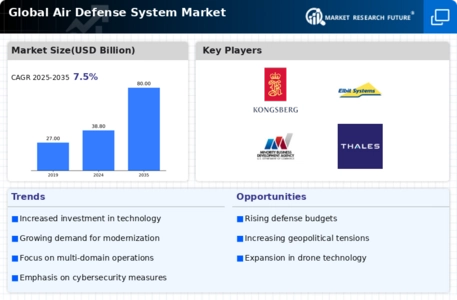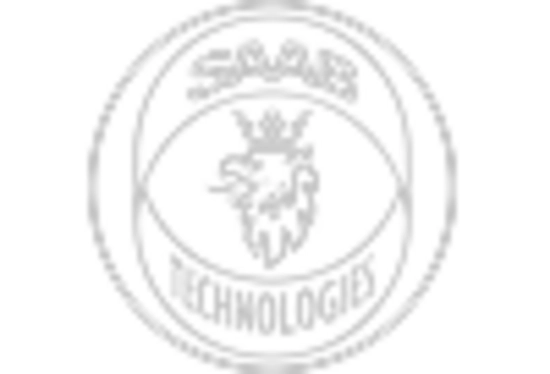Increased Defense Budgets
The Air Defense System Market is significantly influenced by the rising defense budgets of various nations. Governments are recognizing the necessity of investing in advanced air defense systems to counter emerging threats. Recent data indicates that several countries have increased their defense spending by over 5% annually, with a substantial portion earmarked for air defense initiatives. This trend reflects a broader commitment to enhancing national security and military readiness. As nations strive to maintain a technological edge, the demand for sophisticated air defense systems is expected to grow. Consequently, the Air Defense System Market is likely to benefit from this influx of funding, facilitating the development and deployment of next-generation defense solutions.
Technological Innovations
Technological advancements play a pivotal role in shaping the Air Defense System Market. The integration of cutting-edge technologies such as artificial intelligence, machine learning, and advanced radar systems is revolutionizing air defense capabilities. These innovations enhance detection, tracking, and interception of aerial threats, thereby improving overall system effectiveness. The market is witnessing a shift towards more sophisticated systems that can operate in complex environments, adapting to evolving threats. For example, the development of multi-layered defense systems allows for a more comprehensive approach to air defense. As nations prioritize modernization, the Air Defense System Market is likely to expand, driven by the demand for state-of-the-art solutions that can address contemporary security challenges.
Rising Geopolitical Tensions
The Air Defense System Market is experiencing a surge in demand due to escalating geopolitical tensions across various regions. Nations are increasingly investing in advanced air defense systems to safeguard their airspace from potential threats. For instance, military budgets have seen a notable increase, with countries allocating significant portions to enhance their defense capabilities. This trend is particularly evident in regions with ongoing territorial disputes or heightened military activities. The need for robust air defense systems is underscored by the growing frequency of aerial threats, including drones and missile attacks. As a result, the Air Defense System Market is poised for substantial growth, driven by the imperative to ensure national security and protect critical infrastructure.
International Defense Collaborations
International collaborations in defense are shaping the Air Defense System Market by fostering joint development and procurement initiatives. Countries are increasingly recognizing the benefits of sharing resources and expertise to enhance their air defense capabilities. Collaborative projects often lead to cost savings and accelerated technological advancements, as nations pool their knowledge and experience. For instance, joint exercises and training programs facilitate interoperability among allied forces, enhancing collective defense strategies. This trend is likely to continue, as nations seek to strengthen their defense postures through partnerships. Consequently, the Air Defense System Market is expected to grow, driven by the collaborative efforts aimed at addressing shared security challenges.
Emerging Threats from Unmanned Aerial Vehicles
The proliferation of unmanned aerial vehicles (UAVs) poses a significant challenge to national security, thereby driving growth in the Air Defense System Market. As UAV technology becomes more accessible, both state and non-state actors are increasingly utilizing drones for surveillance and attacks. This shift necessitates the development of specialized air defense systems capable of detecting and neutralizing UAV threats. The market is witnessing a surge in demand for systems that can effectively counter these emerging threats, leading to innovations in detection and interception technologies. As nations adapt to this evolving landscape, the Air Defense System Market is likely to expand, focusing on solutions that address the unique challenges posed by UAVs.


















Leave a Comment